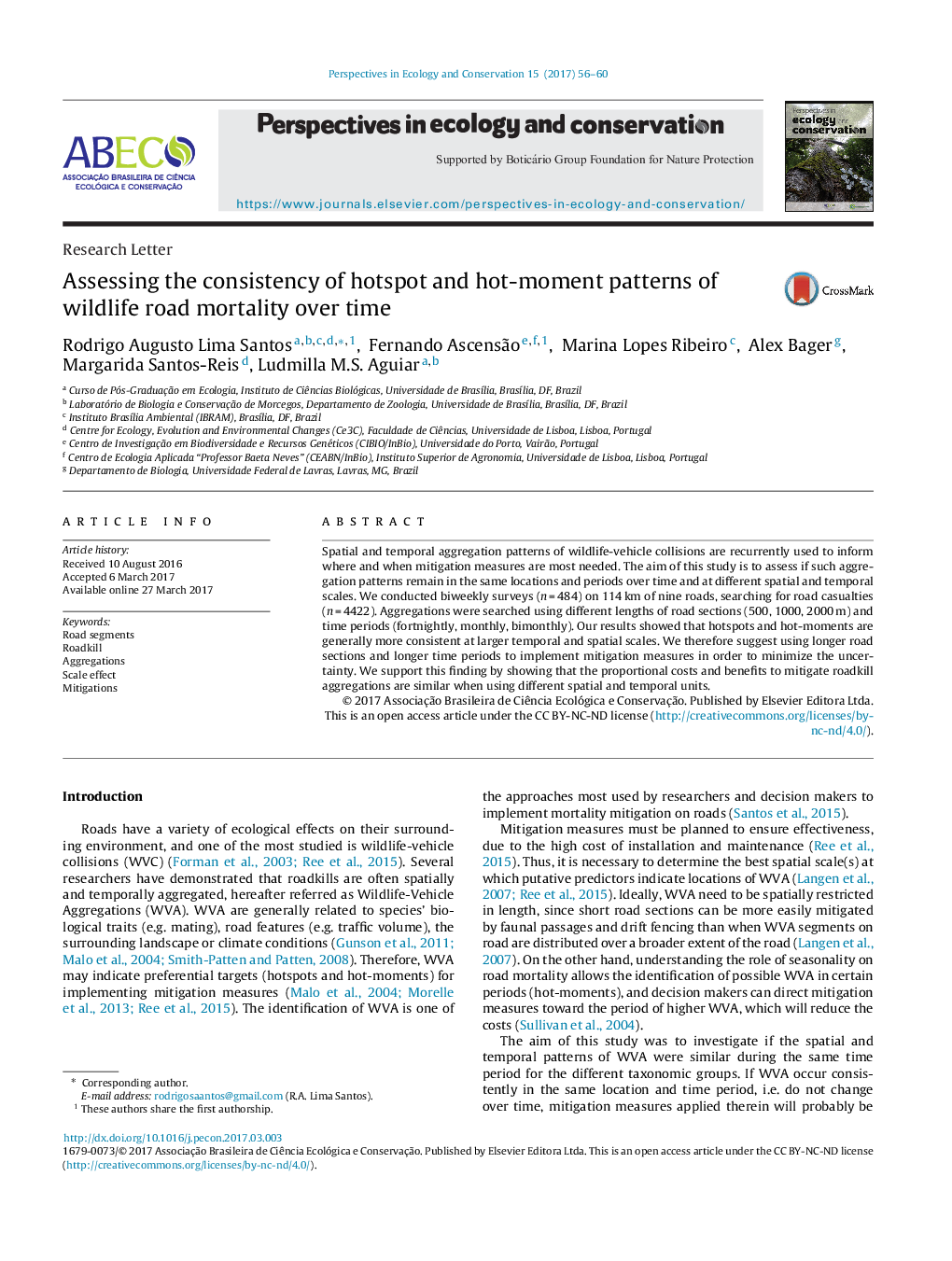| Article ID | Journal | Published Year | Pages | File Type |
|---|---|---|---|---|
| 8920110 | Perspectives in Ecology and Conservation | 2017 | 5 Pages |
Abstract
Spatial and temporal aggregation patterns of wildlife-vehicle collisions are recurrently used to inform where and when mitigation measures are most needed. The aim of this study is to assess if such aggregation patterns remain in the same locations and periods over time and at different spatial and temporal scales. We conducted biweekly surveys (n = 484) on 114 km of nine roads, searching for road casualties (n = 4422). Aggregations were searched using different lengths of road sections (500, 1000, 2000 m) and time periods (fortnightly, monthly, bimonthly). Our results showed that hotspots and hot-moments are generally more consistent at larger temporal and spatial scales. We therefore suggest using longer road sections and longer time periods to implement mitigation measures in order to minimize the uncertainty. We support this finding by showing that the proportional costs and benefits to mitigate roadkill aggregations are similar when using different spatial and temporal units.
Related Topics
Life Sciences
Agricultural and Biological Sciences
Ecology, Evolution, Behavior and Systematics
Authors
Rodrigo Augusto Lima Santos, Fernando Ascensão, Marina Lopes Ribeiro, Alex Bager, Margarida Santos-Reis, Ludmilla M.S. Aguiar,
